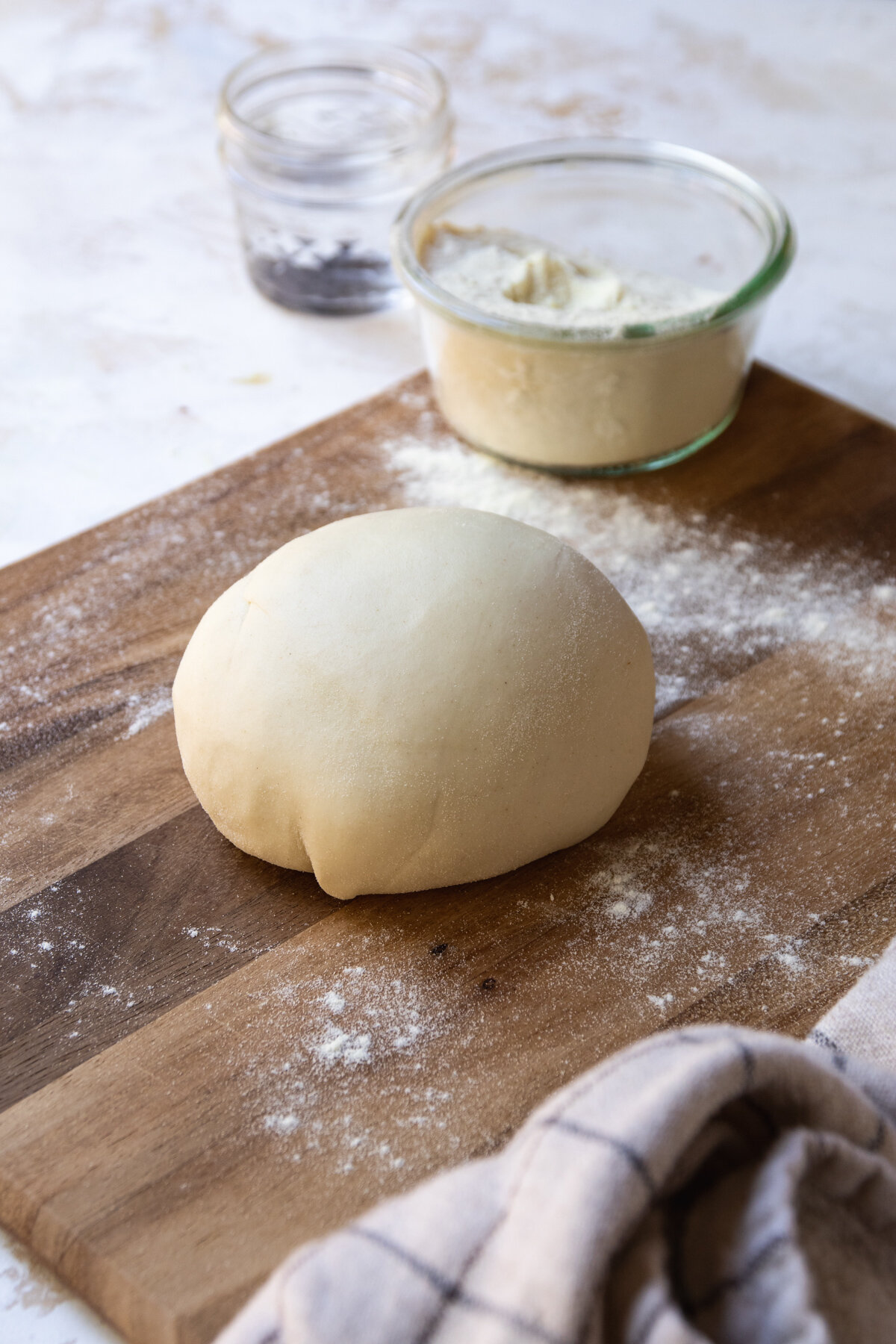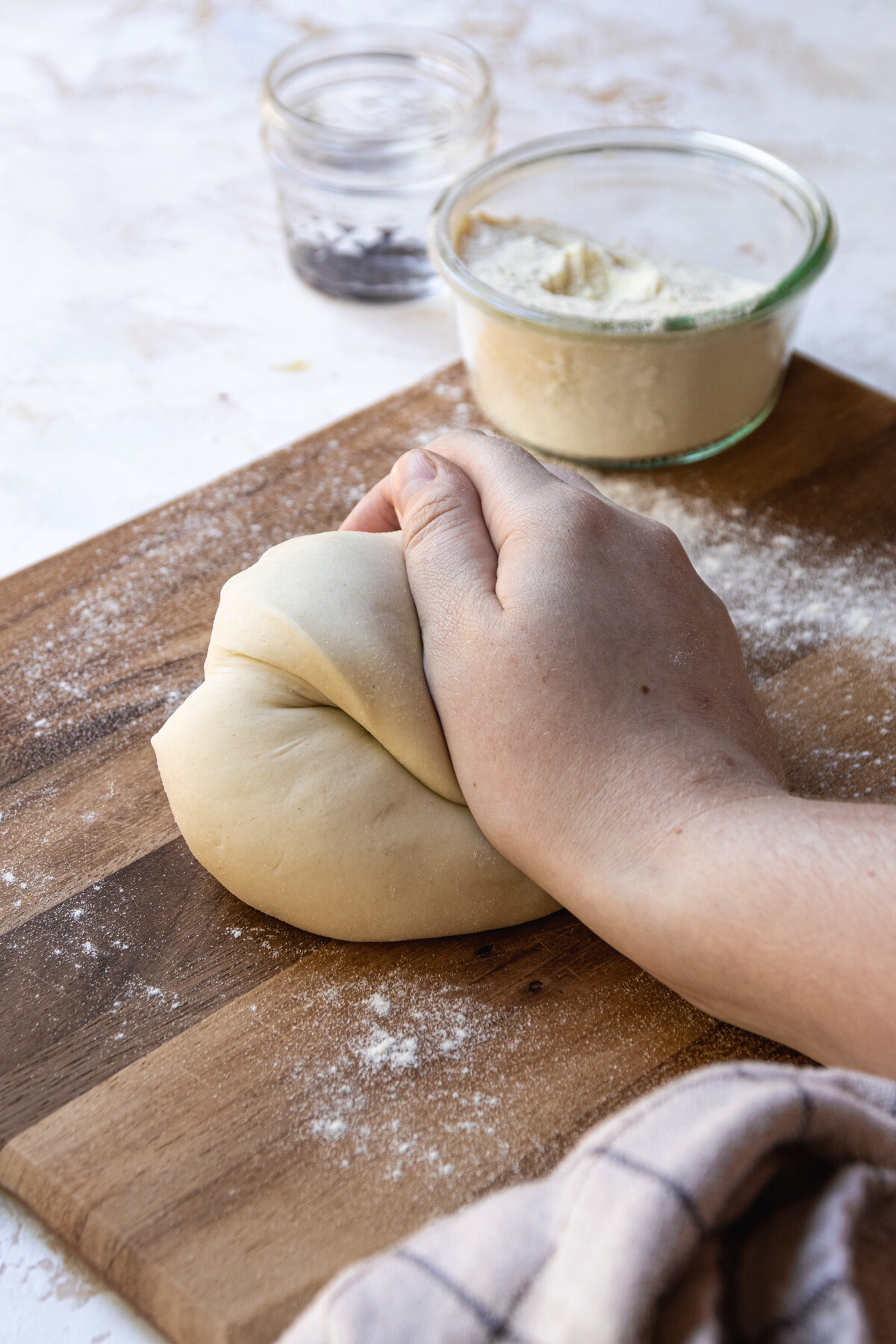Pici alla Carbonara
When I was 3, my parents took me to Tuscany. I was little, curious, and refused to put shoes on in the snow. I remember cobblestone streets, tree-lined paths covered in crunchy auburn leaves, chasing pigeons, and bowls of pici. Most of my memories from that trip are scattered and misplaced but they are among my first. What I know for sure is that it was beautiful and exciting and I was always hungry after a day of walking - or being carried.
I tried many years ago to make pici, but it was a failed attempt and I did not push it any further. A few weeks ago, I decided I wanted to commit to recreating this pasta from my childhood. Of course, my memories are hazy, and I couldn’t exactly remember what it was like, but I entered in with the mindset that I would know when I got it right.
And just like any other homemade pasta, each batch is a little different. Here is what I found from my week of pici making:
Start with the flour and salt, then make a large well in the center, slowly adding the warm water and olive oil
As always, don’t be afraid to stray from exact measurements. Pasta dough can be temperamental - keep extra water and flour on hand to adjust as needed
Make sure to knead the dough enough - it should be soft, smooth and stretchy
Let rest for at least an hour - this allows the gluten to relax
Once you are ready to roll out the pici, keep a small bowl of water and a bowl of flour nearby
Dip the tips of your fingers in the water and start from the center of a small piece of dough, rolling out towards the ends
If the pasta breaks while rolling, you may have to knead the dough more or add a bit more water
Coat the pici in flour and set aside
Repeat!
Test your pici! Rolling out pici is time consuming. Start boiling your water and toss a few pici in until tender, then taste! Too puffy? Roll out a bit thinner. Too chewy? You may need to boil longer or knead the dough more. Once you know your pici is right, roll out the rest knowing a delicious meal awaits.
Pici is made differently depending on the part of Tuscany. In some regions, it's rolled out thick, the recipe includes an egg, or the pici is rolled into one long noodle. The pici I remember and made is a little thicker and shorter than spaghetti, has a slight bite, and is not too chewy.
It can seem intimidating, making each noodle by hand, but once the dough is right, it becomes much easier to roll out. I found a rhythm of rolling each pici, turned on some music, and found the process very fun. And at the end, I was just a quick carbonara away from finding a little piece of my trip to Tuscany in an afternoon meal.
This dish is really all heart and hands. I’m happy to share this passion project with you. Find a quiet afternoon and maybe grab a friend or family member to help. I said that I didn’t remember exactly what pici was like, but I knew how it made me feel. I can tell you what this pici is like and how much it reminded me of those days in Italy. It is the meal you sit down to after a long day of work, letting your body rest and savoring every bite. It’s humble, imperfect, and the meal I’ll come back to time and time again.
Pici alla Carbonara
Ingredients
1 2/3 cups all-purpose flour
2/3 cup semolina flour
3/4 cup water, lukewarm
1 tablespoon olive oil
1/4 teaspoon salt
8 ounces pancetta, sliced thin and cut into small pieces
1 tablespoon olive oil
2 cloves garlic, minced
2 eggs
2/3 cup parmesan cheese
1/3 cup pasta water
pinch of ground black pepper
method
On a large surface, pour out the flours and salt into a mound. Make a large well in the center. Pour the water and olive oil into the center. Using a fork, slowly start incorporating some of the flour into the center, stirring gently. Once most of the water is absorbed, switch to using your hands. Gather the dough into a ball and begin kneading, adding water or flour if needed. Knead for 10-15 minutes, until the dough is smooth and elastic. Cover and refrigerate for at least 1 hour.
Before rolling out the dough, prepare a work surface. Keep a bowl of water, a bowl of flour and something to lay your rolled pici on, like a baking sheet, nearby.
Cut a small piece of dough off, and start rolling. I like to roll the piece between my palms to create a base shape, then use my fingertips to roll from the center outwards. As you begin rolling, dip your fingertips in the water - it helps to have your fingers slightly stick to the dough as you roll. Roll each pici out a little thicker than spaghetti, about 1/4 inch. Once the pici is formed, lightly dip in flour and set aside. Repeat!
Meanwhile, bring a large pot of water to a boil. Boil for 9 minutes, until the pici is tender and al dente.
For the Carbonara: Over medium heat, sauté the pancetta in the olive oil until crisp. Reduce the heat and add the garlic, cooking for 30 seconds, then add the pasta water. Reduce the sauce for two minutes.
Whisk the eggs, cheese, and pepper together in a large bowl. Using tongs, add the cooked pici and pancetta to the bowl and toss until the mixture is creamy and coats the pici.






